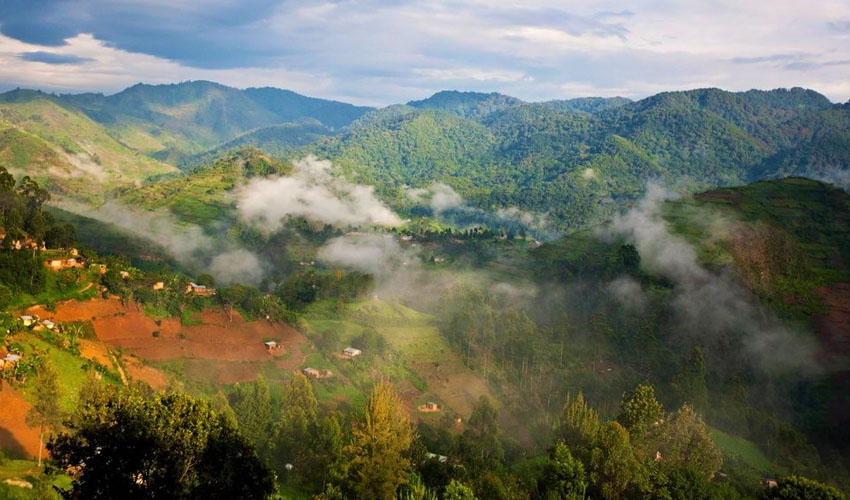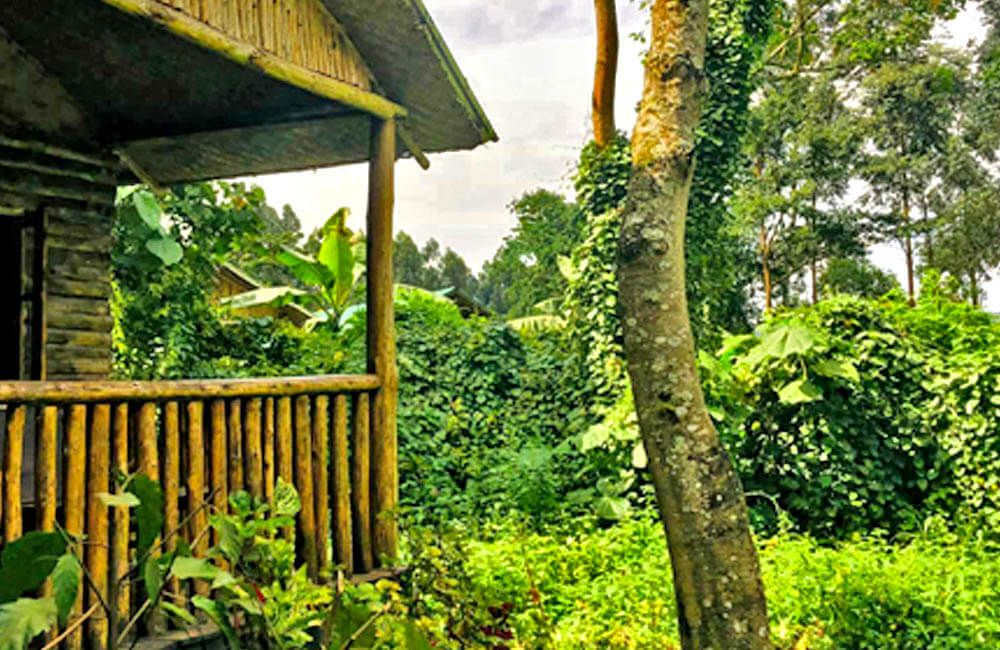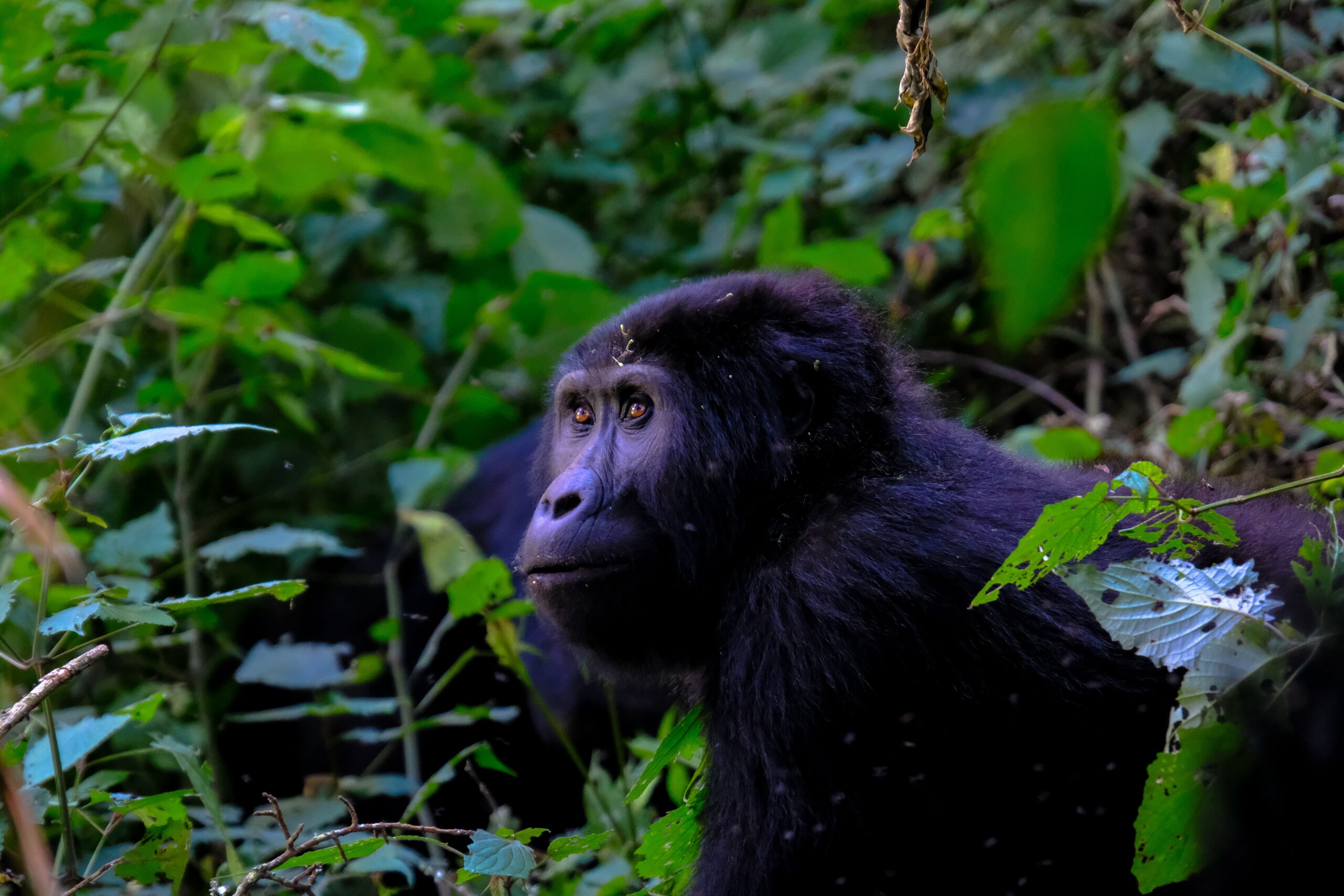
ECO-TOURISM: 10 BEST – UNBELIEVABLE DESTINATIONS TO SEE IN UGANDA


Ruhondeza Lodge – Cottage View
This is a round-up of some of the best eco-tourism destinations in Uganda – showcasing the country’s natural beauty and biodiversity.
Most travelers are more concerned about the number of attractions that a country has to offer. But there are also those who want to get away from the hustle and bustle of city life.
They want a simpler, easier way of living so as to appreciate nature and enjoy themselves in an unadulterated form.
What is Eco-tourism?
Eco-tourism is an ideal alternative for people seeking a vacation with a spiritual quality. It’s about preserving wild places, culture, and wildlife. It’s also about responsible travel.
Eco-tourists usually travel to destinations that are environmentally friendly, culturally diverse, and economically sustainable. They try to be a positive force in their destination rather than a destructive one. This is called Eco-tourism.
What are the benefits of Eco-tourism?
Eco-tourism is a form of tourism that promotes environmental awareness and conservation. The tourists who visit these destinations have a desire to learn about the environment in which they are visiting.
Studies show that people who take part in eco-tourism usually have a lower carbon footprint than non-tourists. Eco-tourism can be a boon for local businesses by providing them with an additional source of income, but it also means more traffic on their website and social media pages, which is naturally good for SEO.
Here are 10 unbelievable eco-tourism destinations to see in Uganda;
Lake Mburo National Park
Lake Mburo National Park is a little gem near the highway that links Kampala to Uganda’s western parks. It is the tiniest of Uganda’s savannah national parks, with more than 500 million-year-old Precambrian metamorphic rocks supporting it.
There are 350 bird species, as well as zebra, impala, eland, buffalo, oribi, Defassa waterbuck, leopard, hippo, hyena, topi, and reedbuck, living there.
Lake Mburo, along with 13 other lakes in the vicinity, is part of a 50-kilometer-long wetland system linked by a marsh. Within the park’s boundaries, five of these lakes can be found.
Because there are no elephants to tame the vegetation, Lake Mburo National Park today has a lot of woods. The savanna is mixed by rocky slopes and forested gorges in the park’s western section, while areas of papyrus swamp and narrow bands of luxuriant riparian vegetation dot the landscape.
Murchison Falls National Park
Murchison falls National Park is located on the western shores of Lake Albert at the border between Uganda and Democratic Republic of Congo. A spectacular waterfall cascades over a series of steep cliffs and cuts through a lush rainforest.
The park is named after Sir Samuel W. Murchison, who was the Governor General of Uganda from 1925 to 1931 and president of the Royal Geographical Society from 1927 to 1929.
The park covers an area of 545km².
Murchison Falls National Park is home to a diverse range of wildlife including leopards, hippopotamus and Nile crocodiles.
Kidepo Valley National Park
Kidepo Valley National Park is located 700 kilometers from Kampala in the rocky, semi-arid lowlands between Uganda’s borders with Sudan and Kenya.
It was designated as a national park in 1962 and is home to a plethora of big game as well as over 77 animal species and over 475 bird species.
Kidepo is Uganda’s most remote national park, but those who brave the lengthy drive north via the untamed frontier region of Karamoja will agree that it is also its most beautiful, since Kidepo is one of Africa’s most beautiful wildernesses.
A savannah environment stretches well beyond the gazetted area, into horizons marked by distant mountain ranges, from Apoka, the park’s centre.
During the dry season, the park’s only permanent water is located in marshes and remnant pools near Apoka in the Narus Valley. The Narus Valley is defined by its seasonal oases, as well as its wide, savannah environment.
Queen Elizabeth national park
Queen Elizabeth National Park is located in western Uganda. It is one of the most visited parks in Africa, with over 60,000 tourists visiting the park every year. The park has a variety of wildlife, including the African elephant, which has attracted many tourists to its shores.
The park has been declared a World Heritage Site because of its exceptional natural beauty and value. The park contains over 200 mammal species, including the rare mountain gorillas. Over 400 species of birds also reside in this beautiful national park.
Bwindi Impenetrable Forest National Park
The Bwindi National Park is a UNESCO World Heritage Site and one of the richest ecosystems in Africa. It is one of those tours destinations that should hit your bucket-list.
Bwindi is home to almost 400 species of plants, around 320 mountain gorillas – almost 1/2 of the world’s gorillas, 350 species of birds, 120 mammals, and many other endangered species in their natural habitat.
The park is best known for its hiking and gorilla experiences and is one of the most popular travel destinations in Uganda.
About 500 km from Kampala, the capital and largest city of Uganda, the park is located on the edge of the western arm of the Great Rift Valley, which extends over an area of 321 square kilometers along the border with the Republic of the Congo in the Kalungu district in southwest Uganda.
Mount Elgon National Park
Mt. Elgon boasts the world’s largest volcanic base at 4,000km2. It is also the oldest and largest isolated volcanic peak in East Africa, located on the Uganda-Kenya boundary.
Its massive bulk, which spans 80 kilometers and rises more than 3,000 meters above the surrounding plains, is a sight to behold. The cool heights of the mountain provide relief from the sweltering plains below, while the higher altitudes provide a haven for vegetation and species.
Over 300 bird species, including the endangered Lammergeyer, can be seen in Mount Elgon National Park. National parks in Uganda and Kenya preserve the higher slopes, forming a large trans-boundary conservation area that has been designated as a UNESCO Man and Biosphere Reserve.
The final ascent to the 4321m Wagagai peak on Mt. Elgon’s abandoned moorlands reveals a stunning and unspoiled environment without the summit-oriented approach common to many mountains: the ultimate goal on reaching the summit of Mt. Elgon is not the final ascent to the 4321m Wagagai peak.
Kibale national park
Kibale Forest National Park, located 130 kilometers west of Kampala, Uganda’s capital city, is a protected rain-forest.
Many endangered primates live in the jungle, including chimps, red colobus monkeys, blue monkeys, and L’hoest’s monkey.
Mount Gahinga and Mount Muhavura, two peaks of the Rwenzori Mountains, are included in the park. Kibale National Park crosses the equator for approximately 60 kilometers east to west and 72 kilometers north to south. It covers a total area of 1,232 km2.
Semuliki national park
Henry Neville Hutchinson, a British naturalist, founded Semuliki National Park in Uganda, Africa. Between the Semliki River and the Albertine Rift escarpment, the park stretches for around 100 square kilometers (39 square miles).
The Toro-Semliki Wildlife Reserve, a UNESCO World Heritage Site, is one of the most notable characteristics of the Semliki Valley.
On the distant western side of the Rwenzori, Semuliki National Park sprawls across the Semliki Valley’s floor. The park is dominated by the Congo Basin’s enormous Ituri Forest’s easternmost stretch.
This is one of Africa’s oldest and most biodiverse forests, and one of the few to have survived the last ice age, which occurred between 12 and 18,000 years ago.
The Semliki Valley has many characteristics that are more common in central Africa than in eastern Africa. The Semliki River (which defines the international border) is a tiny version of the Congo River, the forest is home to several Central African wildlife species, and the local population includes a Batwa pygmy community that originated in the Ituri.
As a result, without having to leave Uganda, this park delivers a flavor of Central Africa.
While the park’s species have been collecting for more than 25,000 years, even earlier processes can be found throughout the park.
Hot springs erupt from the rift valley’s depths, demonstrating the strong underground forces that have shaped it over the previous 14 million years.
Bunyonyi Lake
Lake Bunyonyi (“place of many little birds”) is located in southwest Uganda – close the Rwandan border, between Kisoro and Kabale.
The ideal depth is commonly estimated to be 40 m (130 ft) in scientific literature, although some guides and locals believe that it is much deeper, over 900 m (3000 ft), making it Africa’s second deepest lake.
Bunyonyi Lake, often known as the Lake of Small Birds, is a body of water in Uganda that is home to when it comes to traveling, the lava-dammed lake is simply spectacular.
It has breath-taking views where you can completely absorb oxygen that is not polluted by fumes and gases from automobiles and factories, as in the capital city.
Bunyonyi, which means small birds in the local language, is home to over 200 different bird species, including herons, egrets, African Harrier Hawks, and grey crowned cranes.
With a maximum depth of 900 meters (about 2953 feet), the lake is Africa’s second deepest after Tanzania’s Lake Tanganyika. The lake is also shown on Uganda’s 5000 shillings banknote.
Lake Bunyonyi’s islands
These are also a magical sight that you should not miss while visiting Kabale. First, let me tell you about Lake Bunyonyi’s tiniest and lifeless island; it’s so tiny that you can’t even see it.
The punishment island, as it is known to most, is a place where girls from the Bakiga tribe were transported and abandoned if they had gotten pregnant out of wedlock.
The Kazinga channel
The Kazinga canal is a 32-kilometer (20-mile) long natural channel that connects the two lakes of Lake Gorge (to the east) and Lake Edward (to the west) (which is to the west).
This channel is one of Queen Elizabeth National Park’s most essential features (which is the most well-liked game reserve in Uganda covering an entire land area of 1,978 sq km).
The channel offers a spectacular perspective of Queen Elizabeth National Park’s most important wildlife initiatives.
Lake George, a small lake with an overall depth of 2.4 meters and a surface area of 250 square kilometers, is located on the Kazinga Channel’s eastern side. Streams flowing from the beautiful Rwenzori Mountains immediately north of the lake feed this lake.
The discharge from Lake Gorge runs through this Kazinga Channel and drains west into the nearby Lake Edward (one of Uganda’s most important freshwater lakes), which covers a large area.
Throughout the year, the channel’s beaches attract a vast number of wild animals, birds, and reptiles, with one of the world’s largest populations of hippos and numerous Nile crocodiles.
These animals can be observed well on a boat excursion down the channel or, more likely, at the beautiful Lake Edward’s entrance. The Kazinga Channel Boat Cruise is one of the best and most popular launch experiences in the country.
Conclusion:
Uganda is a dream destination for eco-tourists. Many tourists seek the opportunities of hiking through its lush jungles and mountains, but one thing’s for sure; there’s no shortage of things to see and do in this beautiful country. The list can go on and on, but these ten destinations are not to be missed!











